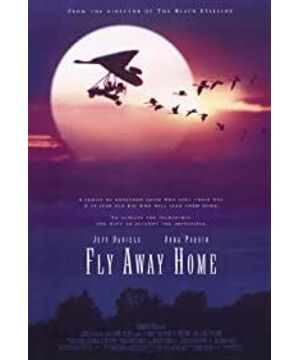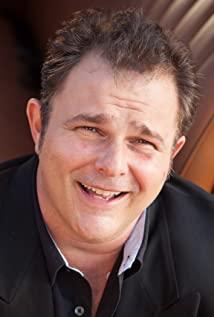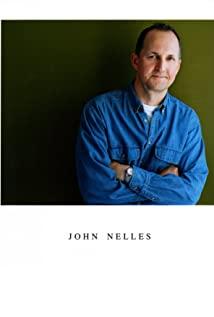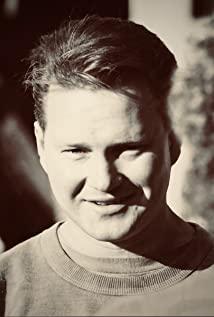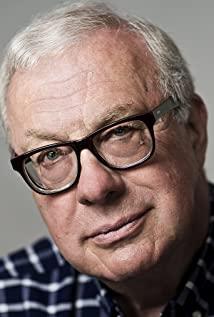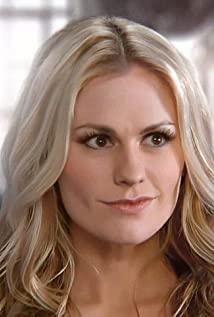How to build something thrilling? The gentle music, lyrical scenes, plus a little unpredictable fate, put all of this at the beginning of the story. It is precisely because of this arrangement that there is an obvious mutation in the film's narrative style: the first half is tragic, and the second half is comedic.
It's almost like a companion chapter of "The Migration of Birds". But "Bird's Migration" is inaction, like an icy blue crystal hidden in a lake; "Flying High with You" is promising, like a beautiful soul seen in the eyes of others. The former is almost nobody's daily life, and the latter is almost all human legends. The former pays attention to the inhuman nature, and the latter pays attention to the education of the wild (inhuman ≠ wild, the latter is the humanized understanding of the former). The former ignores power and never compromises, while the latter emphasizes compromise in the operation of power.
At the beginning, Amy was greeted by a confluence of tragic and comedy fate: meeting his father-losing his mother; returning to his old home-leaving home. For Amy, this is exactly her migration. In this strange old home, everywhere is full of aggressiveness, whether it is the various organs designed by Thomas (magic refrigerator tray, stimulating shower gel), his huge grunt, or a machine that kills nature outside the window in the early morning. Wake up. Watching her uncle watching the fighting show, she felt infinitely boring-is this group of mechanical madmen who love nature really natural? She did not miss her mother for a moment, but in a special moment, she recalled the warmth of her mother during her childhood (just now, right here), so she determined to raise a group of young geese who were so similar to her own situation-she and her They, both the caregivers and the care recipients, have lost their mothers and homes. For Amy, when she raises the geese, she can both be taken care of like a mother (a suggestion of "dressing up in a mirror") and can be taken care of like a child (she and the geese are one body).
"Fly with you", but who is "accompanied" by whom? In "Thomas-Amy-Little Goose", this kind of companionship (education) not only occurs from left to right, but also from right to left. Therefore, the "you" in the title has multiple points: it is not the lightest airplane in the world that accompanies Amy to fly high, but the group of young geese; it is not the moon landing craft he once thought of flying with Thomas, but her daughter. . Not only that, this structure can continue to be simplified-in "human-animal (nature)", not only humans accompany (educate/conquer) animals (nature), but also animals (nature) accompany ( Nurture/blame) human beings. "High" no longer points to the "moon" or "2000 feet", but to courage and reconciliation (that is, love). "Flying", in the movie, flying is a speciality of Thomas, and Amy is envious and disdainful of it. But when Amy was determined to take care of the young goose, reconciliation between her and Thomas became possible—that is, the combination of flight and growth (education). "Migratory birds follow me, I follow you, and we fly south together, great!" This constitutes the transmission of flight, the transmission of growth, and the transmission of education. Judging from the direction of the translated name, these four characters work very well.
There are many interesting structures in the movie. For example, the interaction between established facts and rules is very interesting: established facts can often challenge the rules, but they will eventually be incorporated by the rules-those gazes, praises, and incentives make personal occasional releases change. For the fulcrum of the world. In contrast, I prefer "The Migration of Birds". When we know that the gaze is a weapon, we can at least use our gaze carefully. In "Flying High with You", the wanton gaze is only emphasized on the commendatory and powerful side. This understanding of the world is dishonest. Another clip is quite interesting. It is not a question, but constitutes a question structure: the female voice broadcasted the news: "The little goose is named Yiguo, Stinky, Big John, and Xiaodai. Who can hunt these cute animals? "Following the news broadcast by the male voice: "Wild geese must be served with thick soup, stuffed with rice, and roasted into golden brown." In addition, the obstacles and solutions experienced on the migration journey can also be compared to the police, the army, and the hunters. As for the hunter being a middle-aged male, it is almost a simile (both good and not good) that the animal guards who are also armed with guns are elderly women. And this sentence-"I once raised a turkey, it never followed me", which embodies a kind of unconscious dichotomy: Beasts (bred by humans) are submissive-(lost wild) pets It is rebellious.
There are two points in the whole film that are slightly improper: the first is the sudden change in style, which makes the possibility of the story suddenly changed from a conical shape to a very narrow line; the second is that the character setting of Susan is more complicated, she at least He has five identities: mother, friend, audience, logistics, and invalid promoter of key plots. Let me say: 1. Susan is a moral mother. For Amy, if you want to play my mother, it is tantamount to becoming an intruder in my childhood. But when Susan looked at Thomas and expected him to agree to Amy's request to raise a small goose, Susan and Amy reached a soul reconciliation in this consensus-"want to be a mother"; 2. After verbally giving up becoming a mother, Susan became Amy Friends of, but because there are too few scenes showing their friendship (instead, there are scenes showing Susan as a restrainer), this kind of "verbal abandonment" is less convincing; 3. Susan symbolizes the audience, before Amy flies the plane, What was shown was a negative reaction (shocked, angry, and worried). After Amy successfully flew the plane, what was shown was a positive reaction (inspiration, support, and bravery); 4. Susan is logistics, but it is difficult to tell who is responsible for her. What? In the most symbolic code names, Amy is "Mother Goose", Thomas is "Daddy Goose", assistant is "Water Goose", and Susan is nothing; 5. The key plot is that Amy has not arrived yet and the scene is difficult to clean up. In, Susan is a roarer, as soon as she roars, the world is not only quiet, but time also stagnates (the time of the two sides in the fierce confrontation suddenly stagnates, and they fall into passive waiting for Amy). These five identities are chaotically intertwined in the same character. Not only did they fail to reflect the character's internal conflicts, but they demeaned Susan when trying to elevate Susan. This also reflects that it is the disqualification of the narrative caused by the improper style of the whole film that makes it necessary to have a Susan to take on all the cracks between the shots-even though these shots are instinctively more poetic.
Although this movie resembles "The Migration of Birds", it is actually a migration of people—migrating back to the hometown that was reconciled with the world. This is probably the intention of the director.
Another: Amy's first meeting (although it was actually a reunion, but it's just like seeing it at the first time) The flying passage of Thomas, which touched my heart most, will be remembered by me.
View more about Fly Away Home reviews


